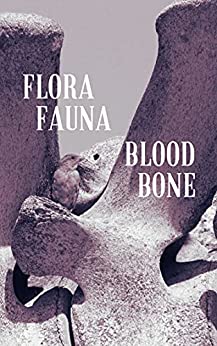
Flora Fauna Blood Bone by Sara Stasi
Flora Fauna Blood Bone, the latest poetic collection by Sara Stasi conceals poems inspired by the paintings of eminent artists of the 15th and 20th centuries. Life After Falling While Filming a Teen Drama takes the major attention of the reader as Sara has turned a radio story artistically into an emotive poem. No doubt in communicating a story with a particular flair for vivid imagery poet is a great storyteller. The book comprises poems relating to plants and animals as the title suggests, ‘Flora Fauna Blood Bone’.
Amazon USAFlora Fauna Blood Bone, the latest poetic collection by Sara Stasi conceals poems inspired by the paintings of eminent artists of the 15th and 20th centuries. Life After Falling While Filming a Teen Drama takes the major attention of the reader as Sara has turned a radio story artistically into an emotive poem. No doubt in communicating a story with a particular flair for vivid imagery poet is a great storyteller. The book comprises poems relating to plants and animals as the title suggests, ‘Flora Fauna Blood Bone’.
We Are Sheltered, represents a peaceful atmosphere as the poet pens down, “waves crash in the distance”, “a squirrel bark” and “mockingbirds sing”. The poet needs to captivate the reader through the opening poem and here the poet has done great work in doing so as the poem continues to relax the reader’s mind and enraptures the one.
We Are Sheltered
In the quiet afternoon, I hear
the bamboo creak and moan,
waves crash in the distance,
a small dog yip, grey cat
hunting in the dry grass,
mockingbirds sing, a squirrel bark,
the maple rustles its leaves.
The Mast, a poem typically showcasing the wreck of La Feliz near Santa Cruz, “a century ago”. The ship was carrying a lot of sardines ("Sardine" is a common name that refers to various small, oily forage fish in the herring family Clupeidae) which were recovered by the crew “who tilted the mast/sideways against the cliff/and fitted it with block and tackle.” The poet describes the sea as violent and hungry “who chews the rocky reef and devours sandy beaches”.
The poems reveal the poet’s fascination with fauna as the meticulousness the reader finds in the poems about cats and birds. The repetitive imagery and compounding of different trees in the verse with fauna by extracting their beauty is noteworthy and shows the poet’s fascination with both lives. Conclusively, the poems focus much more on the feelings, the concrete, the visual imagery of emotional pictures than the intellectual language of thoughts.
--- Rochak Agarwal
